Mould Removal and Treatments by Restoration Specialists
Mould Cleaning Made Easy by Professionals
Mould growth can be a serious issue for homeowners, with the potential to cause health problems and damage your property. Thankfully, mould removal and restoration is possible—especially when it’s addressed early on. While the mould remediation process can be challenging, it doesn’t have to be: calling in the professionals can have its benefits.
In this post, we’ll discuss what mould is, the health risks associated with it, and how to identify, remove and restore it.
Price List 2025
Mould Only Inspections are to identify areas of concern for potential mould growth reasons. This includes particle counting, RH and temperature measurements.
Moisture & Mould Inspections are a more thorough exploration of the building, and potential moisture ingress issues. We use thermal imaging, and moisture meters.
All reports are photographic and ready to be issued for insurance, or to stakeholders.
* Mould Removal Treatments start at $395.00 excluding GST. Price on Application.
Mould Removal & Indoor Air Quality Specialists
While it’s possible to clean mould in the home yourself, it can be safer and more effective to call in professional mould cleaners. With the help of specialists, you can get your home back to its former glory. RESTATE® are experienced in the mould remediation process, and will take the time not only to clean and restore unsightly staining—we will also take steps to prevent future mould growth. Restoration professionals have the experience and equipment necessary to properly remove mould from your home or office quickly and safely.
Mould and Health Problems
While mould occurs naturally in our environment, it can still cause health problems when allowed to grow indoors and in damp environments. Black mould can make a space feel unhealthy to live in.
Some people may not experience any health problems as a result of coming into contact with mould spores. For other people exposed to mould in these environments, health problems can include:
- Chronic respiratory conditions e.g. asthma
- Toxigenic and allergenic health issues
- Irritation of eyes and/or skin
- Nasal congestion, sneezing, coughing and/or wheezing
Those with weakened immune systems, allergies, severe asthma and chronic obstructive or allergic lung diseases are most likely to experience symptoms of mould exposure.
Why Hire Specialists for Removing Mould?
Mould removal is not a DIY project. It is important to use the proper safety gear and equipment when dealing with mould, as it can cause health problems if ingested or inhaled. Professionals will use specialised equipment to remove mould from affected areas, and will also take steps to prevent it from spreading.
As a professional mould cleaner, RESTATE® can stop the spread of fungus in your home. For black mould removal in Auckland, our solutions ensure your indoor environment is the best condition for you.
Professional mould treatments can educate you on signs of mould to look out for: as well as teaching you how to best prevent it. Mould remediation is more likely to be comprehensive and long-lasting: as specialists use special equipment to identify growth.
Mould Removal Specialists
As mould remediation specialists, here are a few benefits that come with RESTATE®.
-
Measurements With Quality Meters and Cameras
At RESTATE®, we have the correct tools to measure and address mould in your indoor environment. These include quality moisture meters, particle counters, and thermal and borescope cameras. Our cameras can help you save time, as it detects mould quickly—before it spreads. Based on our analysis of your environment, we will give you recommendations on the best way to improve and prevent it. -
Savings
At RESTATE®, we offer cost-effective solutions to mould. While mould can destroy indoor spaces if left unchecked, we can help you save money and time as we restore rather than replace. We complete our mould remediation faster than most companies: allowing you to get an affordable mould removal process without invasive procedures. -
In Depth Investigations & Reporting
Our specialists use advanced measurement devices, which use technology at the forefront of the industry. Based on our investigation, we will provide an uncomplicated report which includes details on: your microbial growth risk, particle concentrations and water ingress issues. If you’re facing a black mould removal emergency, RESTATE® will advise on the best course of action. -
Price Beat Guarantee
We’re so certain that we offer the best price on the market: we’re willing to offer a price beat guarantee to all customers. If you’re quoted for the same service at a lower rate than ours, we will beat it by 10%. Terms and conditions apply. -
Reinstatement Service
The foundation of our company is in the construction industry. This means that our specialists understand the effects that microbial damage can have on your property. If we can’t restore your home or workplace to its former glory, we have the building materials and skills to rebuild at a cost-effective price. -
Trained Staff With Experience
Our staff are highly trained in microbial growth, inspection and remediation. They also have training in IICRC methods, and the world renowned Goldmorr mould removal system.
Who do we Service?
Mould damage can happen anywhere; no matter the industry or location. We’ve provided mould treatment across New Zealand, with some of our clients including:

- Insurance providers
- Loss adjusters
- Facilities managers
- Claims managers
- Government agencies
- Healthcare facilities
- Homeowners and tenants
- Property managers
- Real estate agencies
- Property investors
- Body corporates
- Food processing facilities
- Defence force
FREE QUOTES AVAILABLE!
Why Not Contact Us To See if We Can Help You Out Too?
Why Does Mould Grow on Walls?
Mould grows on walls because of humidity. But, there are many steps that occur before you may spot surface mould on the wall.
In order to reproduce, mould produces tiny particles called spores. Spores are invisible to the naked eye, and are carried in the air. If your indoor areas have a lot of moisture in the air, this can create damp which spores can easily land on.
Spores may cause health problems if inhaled, so it’s vital to call in a restoration specialist before damp surfaces spread into a complex mould problem. Generally, black toxic mould will grow and spread after a surface has been wet or moist for at least 72 hours.
The Difference Between Black Mould and Other Types of Mould
Toxic black mould (stachybotrys chartarum) can cause allergic reactions and health problems, and needs to be dealt with in a timely manner. But although many moulds are black in appearance, this doesn’t always mean that they are toxic. So how do you know whether mould is a risk to your health?
Non-toxic types of mould can appear as black, dark blue or green. It will generally have a musty smell, and can appear in the home; as well as in foods and outdoors. Some types of mould may worsen allergies, but will only make you ill after regular and repeated exposure.
The common types of mould, their toxicity and properties are listed in the table below.
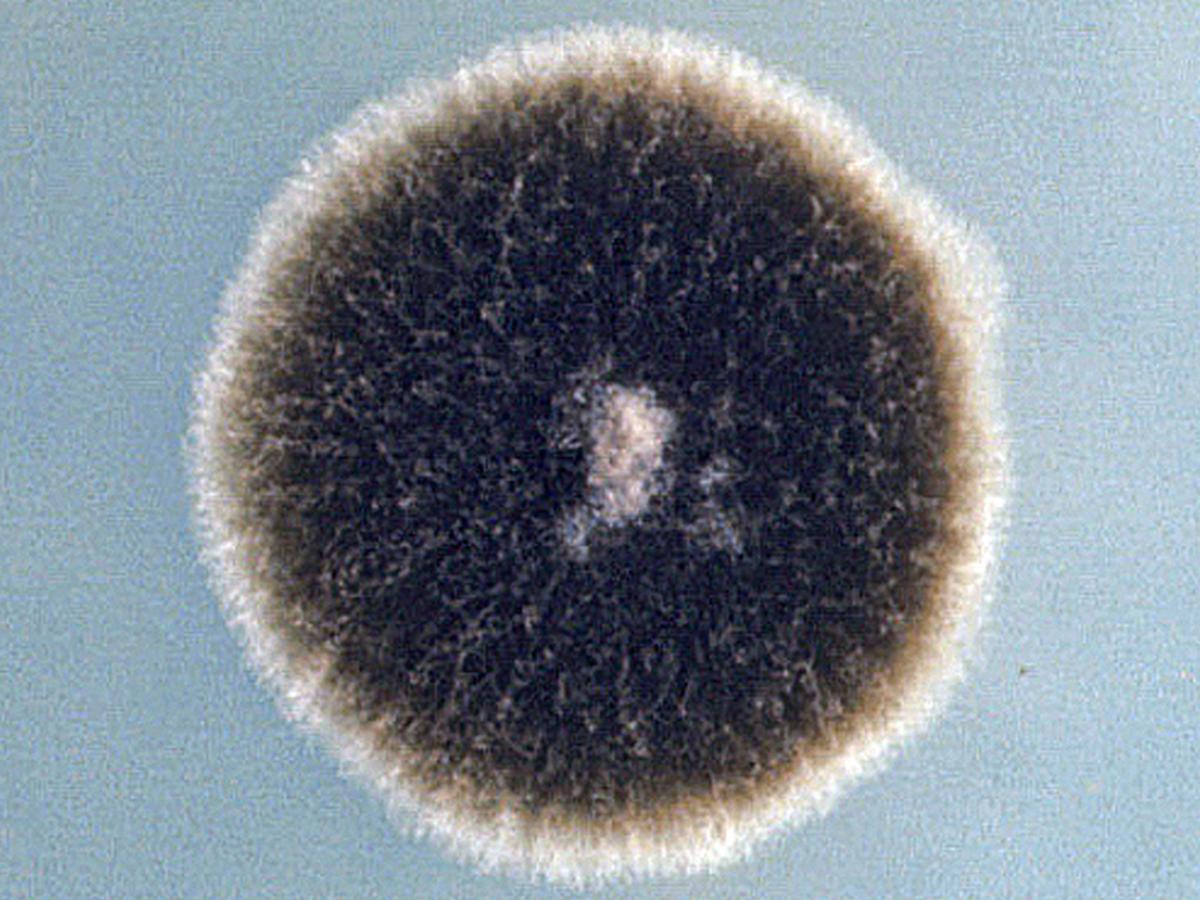
Alternaria
- Appearance: Dark green or brown with a fuzzy texture.
- Common Locations: Showers, bathtubs, sinks, and under leaky sinks or around windows.
- Health Risks:
- Triggers asthma and allergic reactions.
- May exacerbate respiratory conditions like bronchitis.
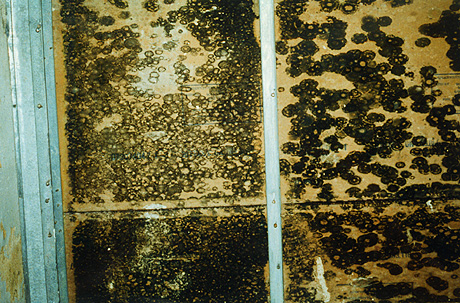
Stachybotrys (Black Mould)
- Appearance: Dark green or black with a slimy texture. Requires consistent moisture to grow.
- Common Locations: Water-damaged areas, including drywall, ceiling tiles, and insulation.
- Health Risks:
- Chronic coughing and sneezing.
- Fatigue and headaches.
- Severe respiratory issues due to mycotoxin production, particularly in children and immunocompromised individuals.

Aspergillus
- Appearance: Often green, white, or grey with a powdery or fuzzy texture. Found on food, fabrics, and building materials like drywall.
- Common Locations: Damp walls, insulation, air conditioning systems, and dusty areas.
- Health Risks:
- Allergic reactions (sneezing, coughing, itchy eyes).
- Respiratory infections, particularly in individuals with weakened immune systems.
- Can produce mycotoxins, which may lead to severe health problems with prolonged exposure.
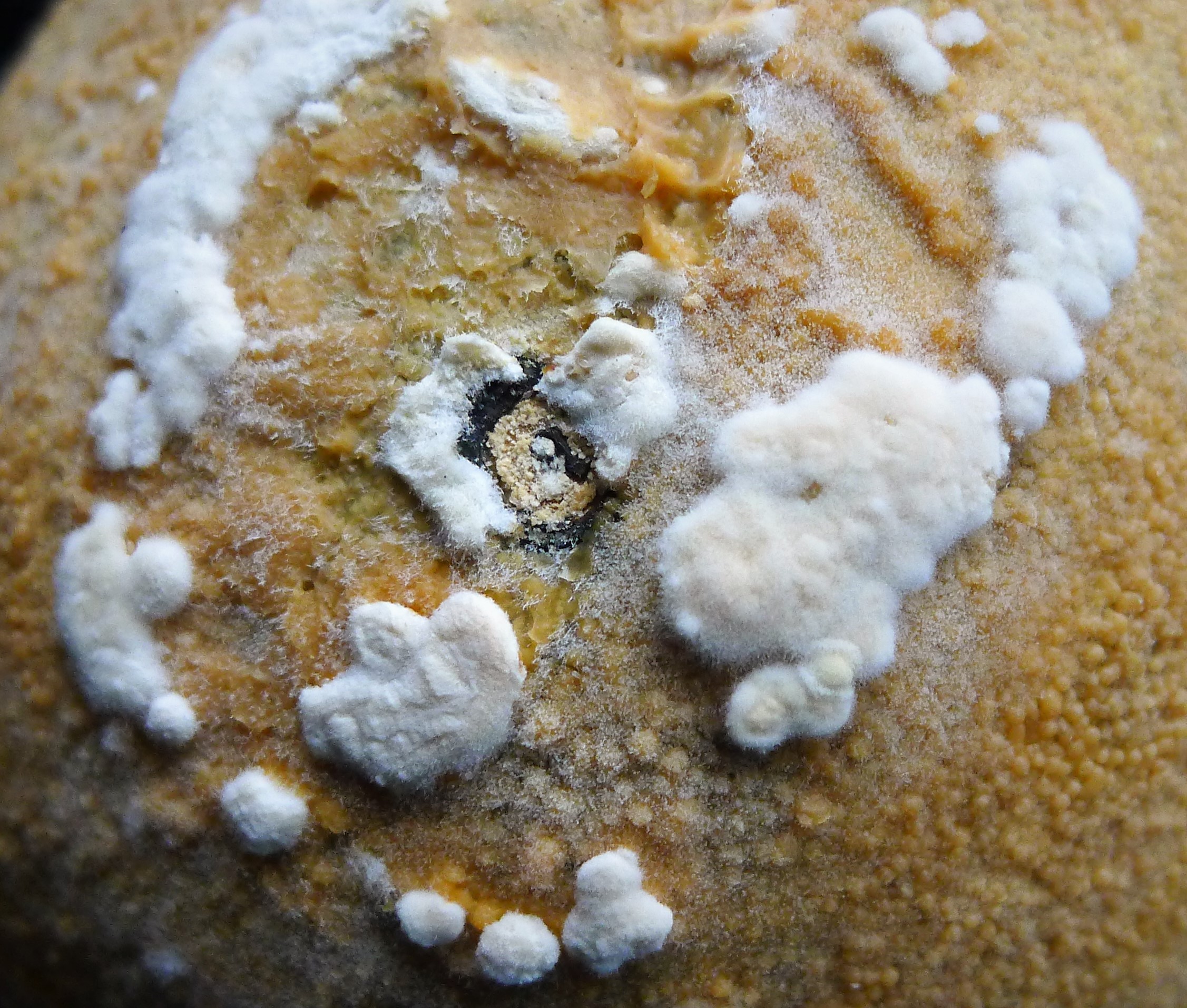
Penicillium
- Appearance: Blue, green, or white with a velvety texture. Spreads quickly.
- Common Locations: Water-damaged materials, carpets, wallpaper, and food products.
- Health Risks:
- Allergic reactions (runny nose, itchy skin).
- Respiratory inflammation.
- Exposure to certain species may produce mycotoxins.
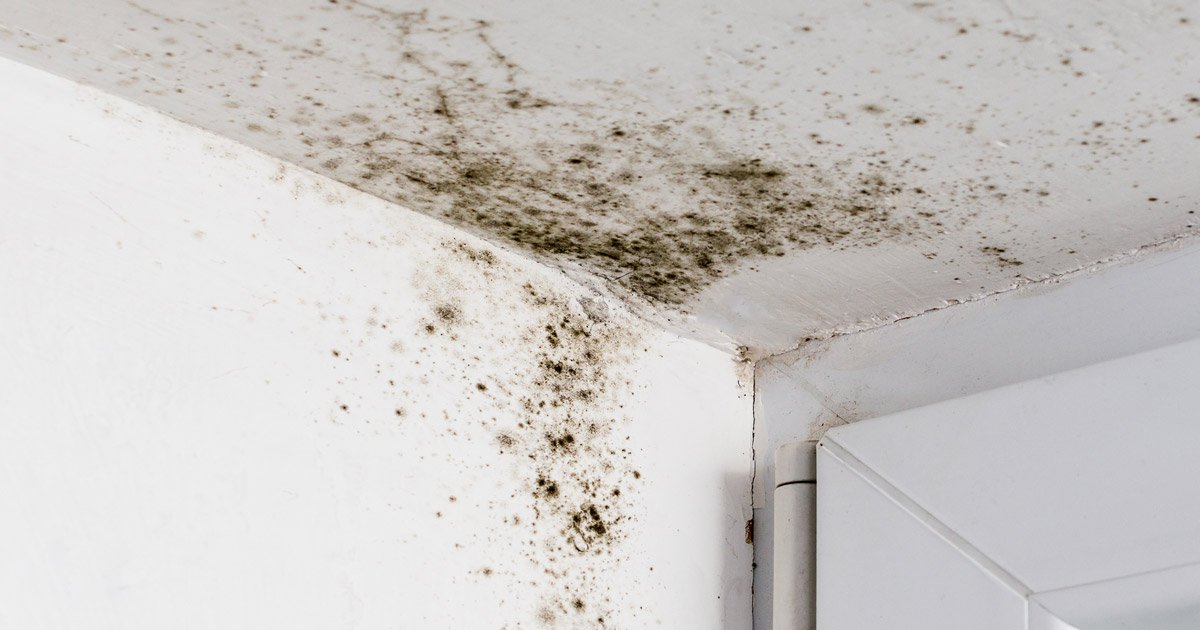
Cladosporium
- Appearance: Greenish-black or brown with a suede-like texture.
- Common Locations: On wood, carpets, textiles, and damp window sills. Thrives in cooler areas like basements and bathrooms.
- Health Risks:
- Allergic reactions (hay fever-like symptoms).
- Asthma attacks.
- Can irritate the skin, eyes, and respiratory tract.
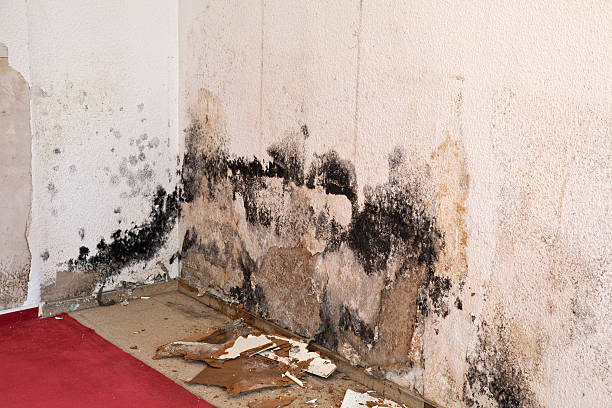
Chaetomium
- Appearance: Starts off as white or grey and becomes dark green to black over time, with a cotton-like texture. It often emits a musty odour.
- Common Locations: Found in water-damaged areas, including drywall, wallpaper, baseboards, and carpets. Prefers cellulose-rich materials like wood and paper.
- Health Risks:
- Skin and nail infections.
- Allergic reactions, including sneezing, coughing, and itchy eyes.
- May exacerbate respiratory issues and cause neurological symptoms with prolonged exposure due to mycotoxins.
What is the Mould Restoration Process?
Mould restoration is a fully transparent process at RESTATE®, and involves just a few simple steps.
1. Inspection and Report
We assess damp areas indoors or outdoors, as well as detecting spore particles in the air. Based on our assessment of the mould and its potential for harmful effects, we provide you with a report of key locations and the required work. This includes a detailed cost breakdown, so you can rest assured that you’re getting a reasonable rate.
2. Mould Removal and Restoration
Our experienced specialists undertake the mould removal and restoration process. RESTATE® are known for being minimally invasive, as we remove physical mould at a fraction of the usual cost or inconvenience.
3. Mould Remediation
Since mould spores are microscopic, it is technically not possible to completely remove all mould. Mould remediation returns particle levels to healthy and safe levels, while accepting that the mould cannot be removed completely. Rather, mould remediation involves cleaning up the spores and providing advice to prevent future mould regrowth.
Where Does Mould Grow?
Mould growth can happen indoors or outdoors, and thrives in damp, dark, steamy or humid environments. In fact, mould cannot grow without moisture.
You’re more likely to find mould in your:
- Walls and wallpaper
- Ceilings
- Bathroom tiles
- Carpets
- Insulation material
- Organic material eg. wood
- Kitchens
- Storage areas
Contact RESTATE® today and gain peace of mind that your family is free from mould and its impacts.
RESTATE®
At RESTATE, we can take care of your water damage, flood restoration, and carpet drying needs. We also work in the following areas for all of your water damage.
- North Shore Auckland
- North Auckland
- South Auckland
- East Auckland
- West Auckland
- Albany
- Manukau
- Papatoetoe
- Henderson
- Mt. Albert
- Mt. Roskill
- Takapuna
- Browns Bay
- Silverdale
- Orewa
- Parnell
- Ponsonby
- Hobsonville
- Takanini
- Ellerslie
